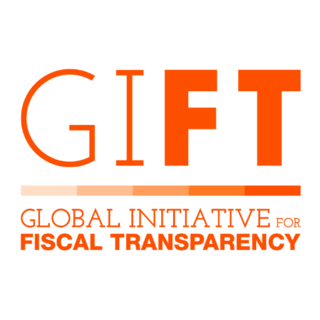
Posted by Paolo de Renzio[1]
Advocates of fiscal transparency and public participation in budget processes are often faced with the awkward “so what” question posed by skeptics. “It’s all good for you to say that transparency and participation are important”, the skeptical questioner asks, “but can you in fact show that they make any real difference?”.
To provide an answer to that question, the Global Initiative for Fiscal Transparency commissioned Joachim Wehner from the London School of Economics and myself to carry out a comprehensive review of existing research evidence. The results are encouraging. There is an increasing amount of research being done on the topic, and while much of it suffers from weaknesses in the methods and evidence used that mean results have to be taken with a pinch of salt, the broad picture that emerges is positive. Fiscal openness – encompassing a wide range of practices and interventions aimed at promoting transparency and participation in fiscal matters – is related to a number of positive impacts, from increased fiscal discipline to improved resource allocation, and from reduced corruption to better service delivery and development outcomes. While only a handful of studies can make a convincing claim to identify causal effects, the most rigorous tests tend to find that transparency and participation in budgeting do lead to desirable outcomes.
The paper is based on 38 studies that were identified from a broad sweep of the literature. The review includes studies that (i) empirically evaluate whether there is a causal link between fiscal openness (transparency and/or participation) and different types of outcome; (ii) have been published as a peer-reviewed academic article, or as a book from a reputable publisher[i]; and (iii) are of sufficient length to qualify as a substantial piece of original research. Of the studies, 23 investigate the effects of variables related to fiscal transparency, and 14 relate to participation in budgetary decisions. Only a single study[ii] looks at both transparency and participation interventions separately to explore their relative impacts. Most studies fall into three main categories of impacts: macro-fiscal, resource allocation and service delivery, and governance. A fourth impact category, related to development outcomes, contains only a small number of studies.
The evidence about the effect of fiscal openness on different macro-fiscal outcomes is typically based on broad measures of fiscal transparency, and it consistently finds that transparency has a beneficial impact, lowering deficits or debt, borrowing costs, and directly or indirectly limiting creative accounting. Evidence on resource allocation and service delivery mainly looks at the impact of participatory mechanisms, and shows that citizen engagement is related to more resources being allocated to priority basic services, and with government interventions becoming more responsive and efficient. This work is no longer limited to the well-documented Brazilian experience with participatory budgeting, and provides insights on why certain mechanisms may work better than others.
Looking at governance, findings are more varied, also because studies use different definitions and measures. Cross-country studies document negative correlations between (fiscal) transparency and corruption, but they cannot make any causal claims. Evidence from specific cases in Uganda, Indonesia, and Brazil provide much richer accounts of how budget information disclosure can reduce corruption and promote accountability – by incentivizing citizens to monitor governments, and public officials to refrain from corrupt behavior. Finally, findings on how fiscal openness affects development outcomes are scarce, but suggest impacts on education in Uganda and health in Brazilian municipalities.
How do these findings relate to the implicit theory of change that proponents of fiscal openness often work with? The documented impacts of transparency are largely limited to intermediate steps – such as macro-fiscal outcomes or reduced corruption – in the long chain leading to development outcomes. To get further down the chain, the evidence seems to suggest, participation needs to kick in, ensuring that governments are better informed about and more responsive to citizens’ needs and priorities. Only then can fiscal openness lead to improved service delivery and improved livelihoods as captured by indicators of human development.
On the other hand, the existing literature sheds very little light on the link between transparency and participation, or between some of the earlier and later steps in the theory of change. For example, the evidence on the impact of participatory mechanisms is not very detailed on the kinds of fiscal information disclosure that form the basis for engaging citizens across different cases. Is it akin to some of the broad measures of budget transparency used for documenting the impact on macro-fiscal outcomes? Or is it rather a more targeted kind of transparency, more directly relevant to users’ needs and interests? Generally speaking, the literature leaves a number of gaps and open questions, both methodological and substantive, that require answers if the push towards fiscal openness is to maintain momentum and make further progress in the coming years. The paper concludes with a few suggestions on how to address such gaps in future research.
[1] Senior Research Fellow, International Budget Partnership
[i] The review also includes working papers published by the IMF, the World Bank, and a few other reputable institutions that have contributed significantly to the debate on fiscal openness and/or are frequently cited in other studies that we examine.
[ii] Olken, B. (2007) “Measuring Corruption: Evidence from a Field Experiment in Indonesia.” Journal of Political Economy, 115(2): 200-249.
Note: The posts on the IMF PFM Blog should not be reported as representing the views of the IMF. The views expressed are those of the authors and do not necessarily represent those of the IMF or IMF policy.







